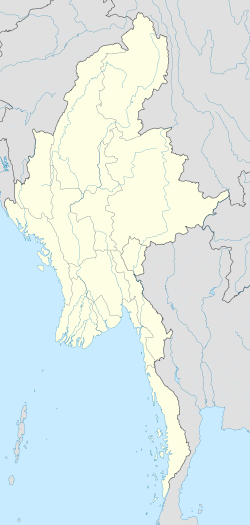NFEPP
NFEPPNFEPP (N-(3-fluoro-1-phenethylpiperidin-4-yl)-N-phenylpropionamide) is an analgesic opioid chemical, similar in structure to fentanyl, designed in 2016 by Spahn et al. from Free University of Berlin[2] to avoid the standard negative side effects of opiates, including opioid overdose, by only targeting inflamed tissue.[3]
염증 조직
염증조직은 비염색조직(7.4)보다 pH 값(약 5–7)이 낮다.[4] 컴퓨터 시뮬레이션을 통해 과학자들은 펜타닐 아날로그가 화학 구조에 불소를 첨가함으로써 염증이 생긴 조직에만 영향을 미치도록 하는 방법을 발견했다. 실험 결과, NFEP는 호흡기 우울증, 진정, 변비, 화학적 탐색 행동 등 전형적인 아편 효과를 나타내지 않고 염증성 통증의 종류가 다른 쥐에서 상해 제한성 진통제를 생성하는 것으로 나타났다.[5][6]
그 결과, NFEPP는 화학물질이 훨씬 더 높은 용량에 도달하기 전까지 비인플레이션 뇌조직과 상호작용하지 않기 때문에 실제로 고통을 겪고 있지 않은 사용자에게는 아무런 영향이 없기 때문에 오피오이드 중독과 의존성을 줄일 수 있는 잠재력을 가지고 있다.[7]
참조
- ^ Drug Enforcement Administration, Department of Justice (February 2018). "Schedules of Controlled Substances:Temporary Placement of Fentanyl-Related Substances in Schedule I. Temporary amendment; temporary scheduling order". Federal Register. 83 (25): 5188–92. PMID 29932611.
- ^ Spahn V, Del Vecchio G, Labuz D, Rodriguez-Gaztelumendi A, Massaly N, Temp J, et al. (March 2017). "A nontoxic pain killer designed by modeling of pathological receptor conformations". Science. 355 (6328): 966–969. Bibcode:2017Sci...355..966S. doi:10.1126/science.aai8636. PMID 28254944. S2CID 206653322.
- ^ Halford B (2017). "An opioid minus major side effects". Chemical & Engineering News. 95 (10): 8.
- ^ Mole B (4 March 2017). "Early study suggests new opioid is non-addictive, works only where it hurt". Ars Technica.
- ^ Rodriguez-Gaztelumendi A, Spahn V, Labuz D, Machelska H, Stein C (November 2018). "Analgesic effects of a novel pH-dependent μ-opioid receptor agonist in models of neuropathic and abdominal pain". Pain. 159 (11): 2277–2284. doi:10.1097/j.pain.0000000000001328. PMC 6203420. PMID 29994988.
- ^ Massaly N, Temp J, Machelska H, Stein C (December 2020). "Uncovering the analgesic effects of a pH-dependent mu-opioid receptor agonist using a model of nonevoked ongoing pain". Pain. 161 (12): 2798–2804. doi:10.1097/j.pain.0000000000001968. PMID 32639370. S2CID 220410251.
- ^ Baamonde A, Menéndez L, González-Rodríguez S, Lastra A, Seitz V, Stein C, Machelska H (October 2020). "A low pKa ligand inhibits cancer-associated pain in mice by activating peripheral mu-opioid receptors". Scientific Reports. 10 (1): 18599. Bibcode:2020NatSR..1018599B. doi:10.1038/s41598-020-75509-4. PMC 7596718. PMID 33122720.


